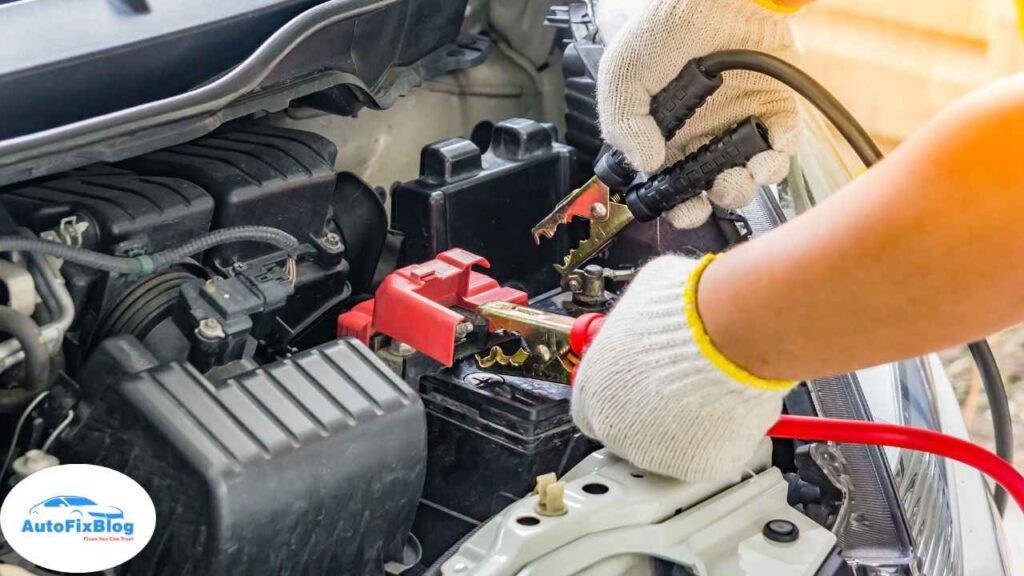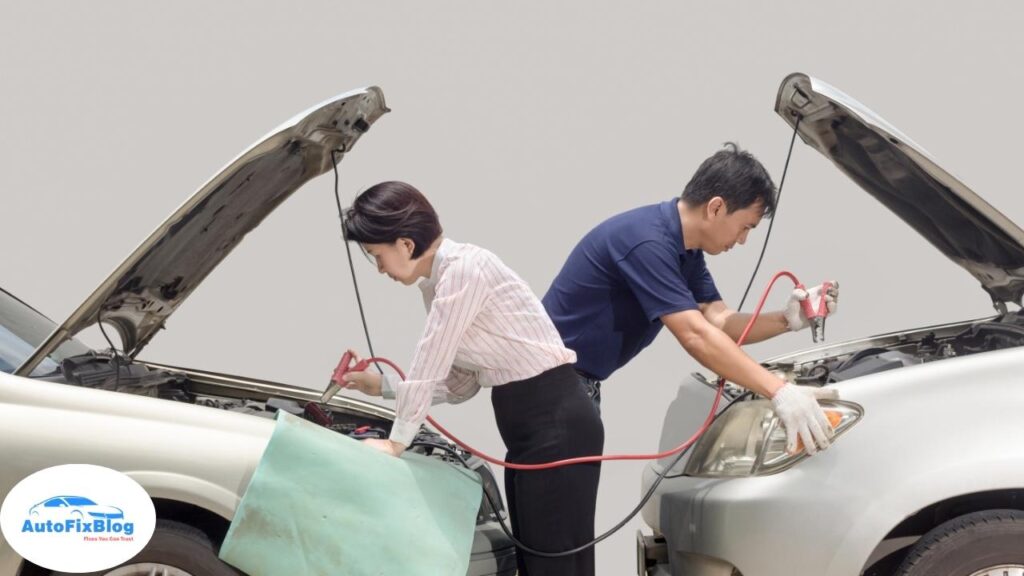Jump-starting a car is a useful skill for drivers, especially in situations where the battery dies unexpectedly. It’s essential to understand how many amps to jump start a car safely, as using the wrong amount can damage both the battery and other electrical systems. In this guide, we’ll break down the amps needed to jump-start different types of vehicles, explain the role of a car’s battery in the process, and provide tips on choosing the right jump starter for emergencies.
Why Do Car Batteries Need Jump-Starting?
Car batteries often need a jump-start due to factors like cold weather, age, or leaving electrical systems (like lights) on for an extended period. When a car battery loses charge, it lacks the power needed to start the engine, leading to car problems. In this case, jump-starting the vehicle provides an external boost of power to get the engine running.
Understanding the Amps Required to Jump-Start a Car
When answering the question of how many amps to jump start a car, it’s important to consider the size and type of vehicle. Smaller cars require fewer amps than larger vehicles or trucks due to differences in engine size and battery capacity. Typically, car batteries have a voltage of 12V, but the amount of amperage needed for a jump-start can vary:
- Compact Cars: Most small sedans and compact cars require between 200 and 400 amps to jump-start. Compact cars have smaller engines and lighter electrical loads, so they need less power.
- Midsize Sedans and SUVs: Midsize sedans or SUVs typically need around 400 to 600 amps. Their engines are larger and may have additional electrical demands.
- Larger Vehicles and Trucks: For trucks and larger SUVs, 700 to 1,000 amps may be necessary to jump-start the vehicle. This is because these vehicles often have larger engines and higher electrical demands.
These figures are general estimates, and the exact number can vary depending on factors like the age of the battery, temperature, and the condition of the vehicle’s electrical system.

How to Determine the Right Amps for Your Vehicle
If you’re trying to determine how many amps to jump start a car, check your vehicle’s owner’s manual or the battery specifications. Most car manuals provide information about the battery’s Cold Cranking Amps (CCA) rating, which is the amount of current a battery can deliver at 0°F for 30 seconds while maintaining at least 7.2 volts. This CCA rating gives you an idea of the power needed to jump-start the car.
For instance, a car battery with a CCA rating of 300 amps generally requires a jump starter that can deliver at least 300 amps. However, many jump starters are designed with a range of amp outputs, so it’s often better to choose a device with a higher amp rating than your battery’s CCA rating.
Types of Jump Starters and Their Amperage
There are two primary types of jump starters available: traditional jump-start cables and portable jump starters. Here’s how they differ in terms of amperage:
- Traditional Jumper Cables: When using jumper cables, the amps come from the live vehicle’s battery and alternator. It’s best to have at least a 400-amp capacity, as this is generally enough to jump-start most vehicles. However, if you’re trying to jump-start a larger vehicle, ensure that the cables are rated for higher amperage to avoid overheating or damaging the wires.
- Portable Jump Starters: Portable jump starters come in various sizes and amp ratings, ranging from 300 to over 1,000 amps. Smaller units with 300-400 amps are suitable for compact cars, while 700-1,000-amp jump starters are better for trucks or large SUVs. Portable jump starters are convenient because they don’t require a second car for a jump and can be stored in the vehicle for emergencies.
Choosing the right portable jump starter involves checking your car’s battery requirements and selecting a model with sufficient amperage. Going slightly higher than the minimum amps needed is generally safe, as it provides extra power without causing damage.
Factors That Influence the Amps Needed for a Jump Start
Several factors can affect how many amps to jump start a car in any given situation. Here are some key influences:
- Temperature: Cold weather can make it harder for a battery to generate enough power. In freezing conditions, you may need additional amps to start the vehicle since batteries lose a portion of their capacity in low temperatures.
- Battery Age and Condition: Older or partially degraded batteries may need more amps for a successful jump start. As batteries age, their efficiency and ability to hold a charge decrease, requiring more power to get the car running.
- Vehicle Size and Engine Type: Larger vehicles with bigger engines (like V8 or diesel engines) generally require more amps to start than smaller engines. Diesel engines, in particular, need more power for ignition, often requiring jump starters with higher amp ratings.
- Electrical Accessories: Cars with added electrical systems, like advanced infotainment, lighting, or alarm systems, may demand more power for a jump start. Turning off any unnecessary electrical accessories before jump-starting can help reduce the amps needed.
Common Mistakes to Avoid When Jump-Starting a Car
When determining how many amps to jump start a car, it’s essential to avoid some common mistakes to ensure safety and prevent damage:
- Using a Low-Amp Jump Starter: Using a jump starter with insufficient amperage may not start the car and can strain the device, possibly leading to overheating.
- Incorrect Cable Connections: Connecting the jumper cables incorrectly can cause short circuits, damaging the battery or electrical system. Always attach the positive clamp to the positive terminal and the negative clamp to a metal ground.
- Jump-Starting a Faulty Battery: If your car battery is heavily corroded or damaged, jump-starting may not work and could worsen car problems. Inspect the battery for any signs of damage and replace it if necessary.
Choosing the Right Portable Jump Starter for Emergencies
Portable jump starters are highly convenient and eliminate the need for a second vehicle. When selecting one, consider the following factors to ensure it meets your car’s requirements:
- Amp Rating: Choose a jump starter with an amp rating that’s compatible with your vehicle type and battery’s CCA rating. It’s better to have a model with slightly higher amps than needed for extra power.
- Safety Features: Look for jump starters with built-in safety features like reverse polarity protection, overcharge protection, and short-circuit prevention to reduce the risk of accidents.
- Portability and Capacity: Select a jump starter that’s compact enough to fit in your car but has enough power capacity for multiple uses. Some jump starters also have USB ports and lights, adding functionality for emergencies.
Additional Tips for Preventing Battery Drain and Avoiding Jump Starts
While understanding how many amps to jump start a car is useful, it’s even better to prevent battery issues from arising in the first place. Here are some tips to avoid battery drain:
- Regularly Check Battery Health: Many car batteries need replacement every 3-5 years. Testing your battery annually can help you identify when it’s weakening.
- Turn Off Accessories When Not in Use: Leaving lights, infotainment, or other accessories on can drain the battery, especially in colder months.
- Run the Engine Periodically: If you’re not using your car regularly, start the engine once a week to maintain battery charge.
Keeping your battery in good condition helps you avoid the need for frequent jump-starts and minimizes car problems.
FAQs on How Many Amps to Jump Start a Car
Q1: Is a 200-amp jump starter enough for a car?
A: Yes, 200 amps can be enough for smaller, compact cars or motorcycles, but it’s generally recommended to use a jump starter with 300-400 amps for most sedans and SUVs.
Q2: What’s the ideal amp rating for larger vehicles like trucks?
A: For larger vehicles, look for jump starters with 700 to 1,000 amps, as these vehicles have larger engines and more electrical needs.
Q3: Does cold weather increase the amp requirement for jump-starting a car?
A: Yes, cold weather can reduce a battery’s efficiency, meaning more amps may be needed to jump-start the vehicle. In extremely cold conditions, using a jump starter with a higher amp rating is beneficial.
Q4: Can using too many amps damage my car battery?
A: A jump starter with slightly higher amps than needed is safe, but avoid using excessively high amps as it could stress the electrical system.
Understanding how many amps to jump start a car is key to ensuring a smooth and safe jump start. Smaller cars often require around 300-400 amps, while larger vehicles may need 700-1,000 amps. By using the right equipment and following safe practices, you can get your car running without causing damage to the battery or electrical systems.
Taking preventive steps, such as regular battery maintenance and investing in a reliable jump starter, can help reduce the likelihood of getting stranded with a dead battery. A portable jump starter that’s well-suited for your car is a wise investment for any driver, providing peace of mind and a practical solution for emergencies.



